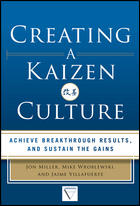Quality Web Exclusive
Calibration and More Surveyed by Student Group at VA Tech

The Consulting Group at Virginia Tech, a student organization on Virginia Tech’s campus, spent the spring 2020 semester researching, surveying, and analyzing current trends in United States laboratories. A twelve-question survey was distributed to contacts from laboratories of varying industries, including calibration, manufacturing, medical examiners, environmental, and many more. These contacts were given a one-month timeline to complete the survey, with weekly reminders on Monday mornings.
After a one-month survey launch, CGVT acquired 529 survey responses. These responses were filtered and analyzed via Tableau, a data analysis tool, to identify common trends, pain points, and advances within the industries. This article will touch on the big takeaways from the study.
The survey acquired responses from laboratories in the following seventeen industries: Aerospace, Agriculture, Calibration, Cannabis, Clinical, Energy, Environmental, Food, Forensics, Gaming, Manufacturing, Material Testing, Medical Examiners, Pathology, Public Health, Toxicology, and Veterinarian. Calibration and Environmental comprised a combined 36.8% of survey respondents, while Gaming yielded 0.56% of respondents. After conducting further external research, our team discovered the representation of industries closely reflected the abundance of those laboratories across the United States.
CGVT’s study showed use of the following accrediting bodies: American Association for Laboratory Accreditation (A2LA), American National Standards Institute (ANAB), College of American Pathologists (CAP), Perry Johnson Laboratory Accreditation (PJLA), National Voluntary Laboratory Accreditation Program (NVLAP), and Clinical Laboratory Improvement Amendments (CLIA). Unsurprisingly, A2LA was used by a 40.6% majority share of laboratories. ANAB had the second largest share at 27.1% of survey respondents. However, even with a large representation of Clinical laboratories, more laboratories reported no use of an accrediting body (7.1%) than use of CLIA (0.7%). Nearly 66% of Clinical laboratories reported use of CAP, while 3.9% of Clinical laboratories reported using CLIA. The lack of CLIA accreditation by Clinical laboratories was surprising to the CGVT team when analyzing survey data. Such outcomes could be a result of cross-functional laboratories, identifying themselves as Clinical laboratories within the survey but operating as a part of multiple industries.
Cannabis laboratories, one of the fastest growing industries in recent years, reported 30.8% of laboratories with no current accreditation. This large proportion of unaccredited laboratories was expected by our research team. Cannabis labs who reported accreditation were typically larger in size, and utilized A2LA, Perry Johnson’s or ANAB for accreditation.
Aside from accreditation trends, our survey focused on the use of software such as a Quality Management Software (QMS), Laboratory Information Management System (LIMS), and Human Resource Information System (HRIS) within the laboratories. With custom software solutions becoming a large trend in many lines of business, the CGVT team asked survey respondents to identify what type of software are currently being used, their software vendor of choice, and any interest in integrating more software solutions into their laboratories within twelve months.
Nearly 37% of respondents indicated their laboratory currently utilizes a Quality Management Software. This software typically contain document control provisions and are built on workflow views for employees. Survey respondents indicated turning to QMS software to alleviate risks related to human capital problems, document control, data analysis, and accreditation. Furthermore, 25% of laboratories indicated a desire to automate document control, a problem often addressed by the QMS.
Laboratory Information Management Systems are also widely used by United States’ testing laboratories, however, no specific LIMS provider reigned as the most used. Survey respondents indicated that internally developed systems are the most widely used LIMS software. Wide selection of LIMS and cost saving initiatives may have pushed laboratories to customize their own software.
In February, 18.7% of the survey respondents indicated interest in purchasing a new software for their laboratory within the next twelve months. However, with the global COVID-19 pandemic temporarily shutting down many U.S. testing laboratories, changing procedures, and limiting capacities since the survey completion, respondents may have a different answer today. The CGVT team can conclude that despite setbacks, these laboratories will still seek solutions to common laboratory risks and have continued interest in automating their procedures.
The CGVT survey included a free response question, requiring respondents to type a submission addressing their laboratory’s biggest source of risk. These free response answers were then grouped into ten themes, including auditing, accreditation, communication, compliance, data analysis, document control, human capital, industry specific, software, and training. Definitions of what free response submissions were included in each theme are identified in Figure 1.
After filtering through free response questions, identifying keywords, and mapping trends, the team found human capital risks to be the most prominent in U.S. testing laboratories. Specifically, the risks associated with under trained employees, high turnover from employee burn-out, and struggle to locate a skilled workforce with appropriate qualifications were addressed by survey respondents. Human error with data entry, safety, and compliance is also a large concern. Furthermore, training, a theme closely related to human capital, was commonly mentioned by laboratories. Access to credible training materials, lack of time to train, and overall employee knowledge pose risk to the responding laboratories.
After spending several months collecting data, researching the testing laboratory market, and working directly with contacts in the laboratories, the CGVT team identified many gaps, trends, and risks within the United States testing laboratory industry that often are overlooked. More studies, similar to the one conducted by CGVT, need to be completed to identify further inconsistency in belief about the U.S. testing laboratories.
The full technical market research study conducted by the Consulting Group at Virginia Tech can be found at: https://sites.google.com/vt.edu/cgvt-market-study/home. Special thanks to CGVT team members including Antoine Suhas, Anthony Desimini, Christopher Dutton, and John Faysal for helping to conduct the study, analyze data, and author the white paper. For more information or specific questions, reach out to Rachel Trebour at rtrebour@vt.edu.
Looking for a reprint of this article?
From high-res PDFs to custom plaques, order your copy today!





